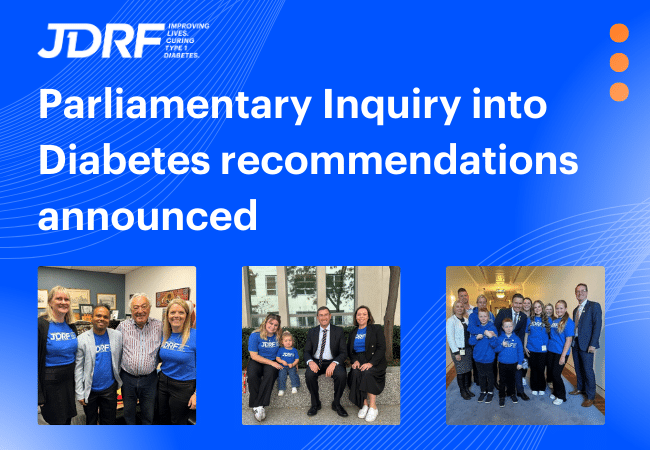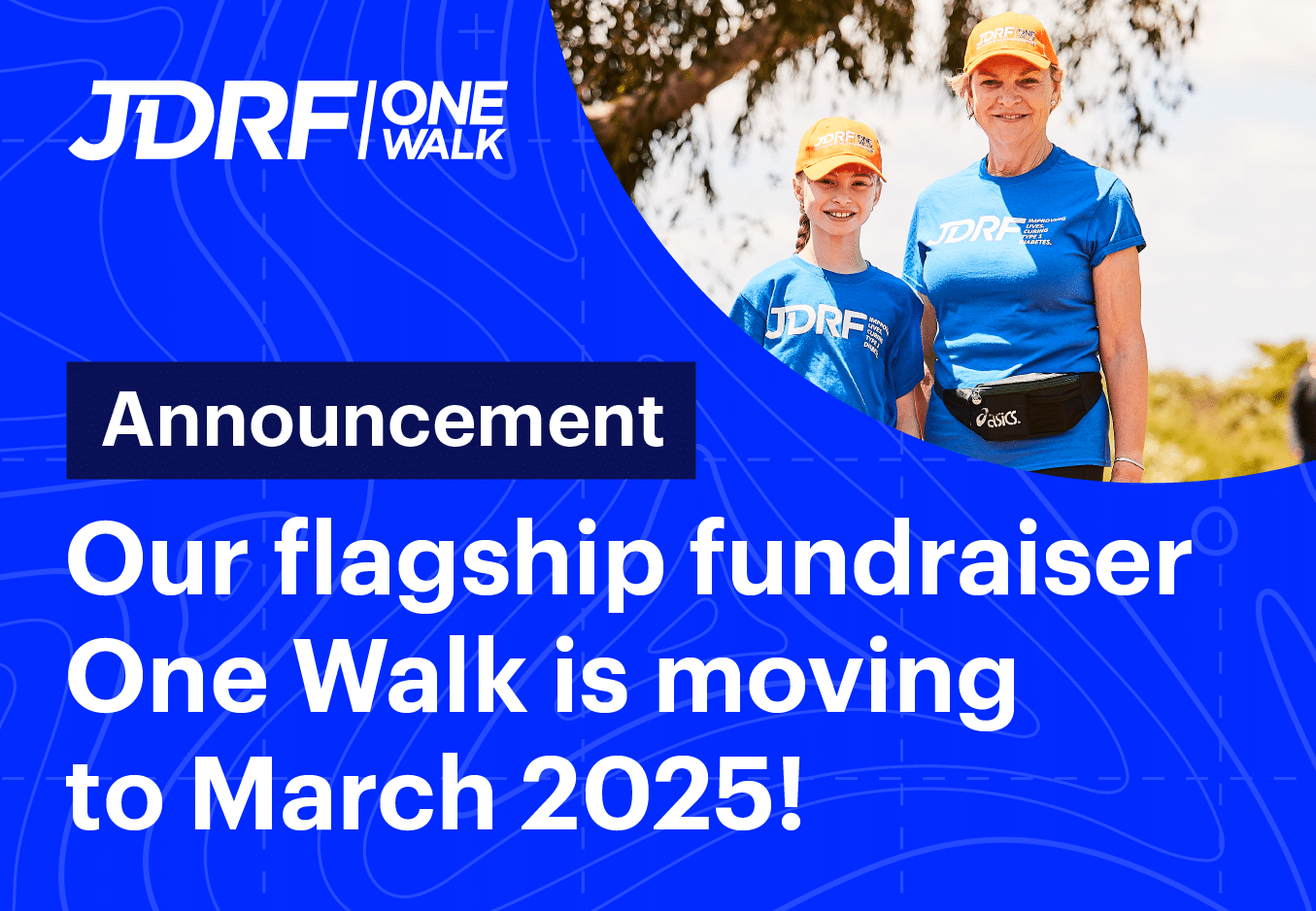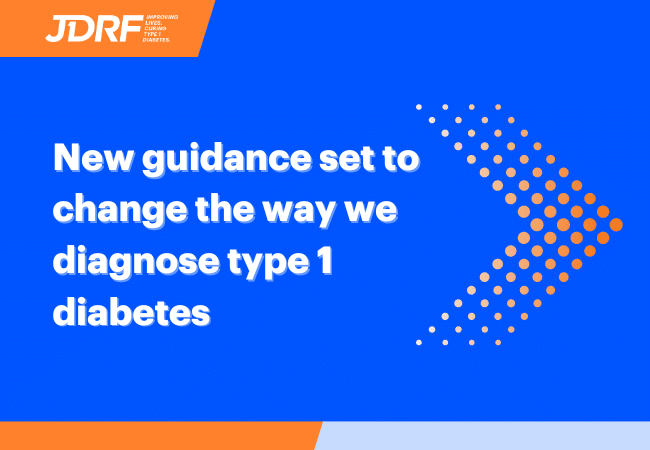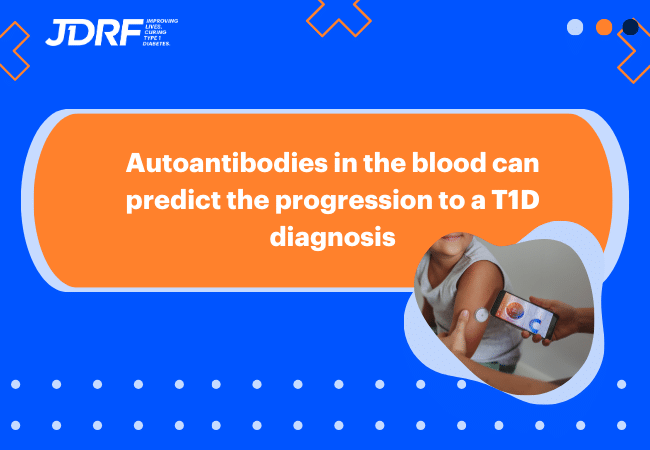Type 1 diabetes screening pilot rolls out in primary school for the first time

This World Diabetes Day, on Tuesday 14th November, students from kindergarten and year 4 at Inaburra School in Sydney’s south participated in screening to detect type 1 diabetes (T1D).
This is part of the JDRF-funded Australian Type 1 Diabetes National Screening Pilot, a research project looking to identify early-stage T1D in childhood. It was the first time the pilot has been offered in a school setting.
Long-term, the pilot is aiming to make early T1D detection available to every child in Australia. A nationwide roll out of a T1D screening program would make Australia one of the first countries to offer childhood screening for T1D.
The pilot is led by Dr Kirstine Bell from the University of Sydney’s Charles Perkins Centre.
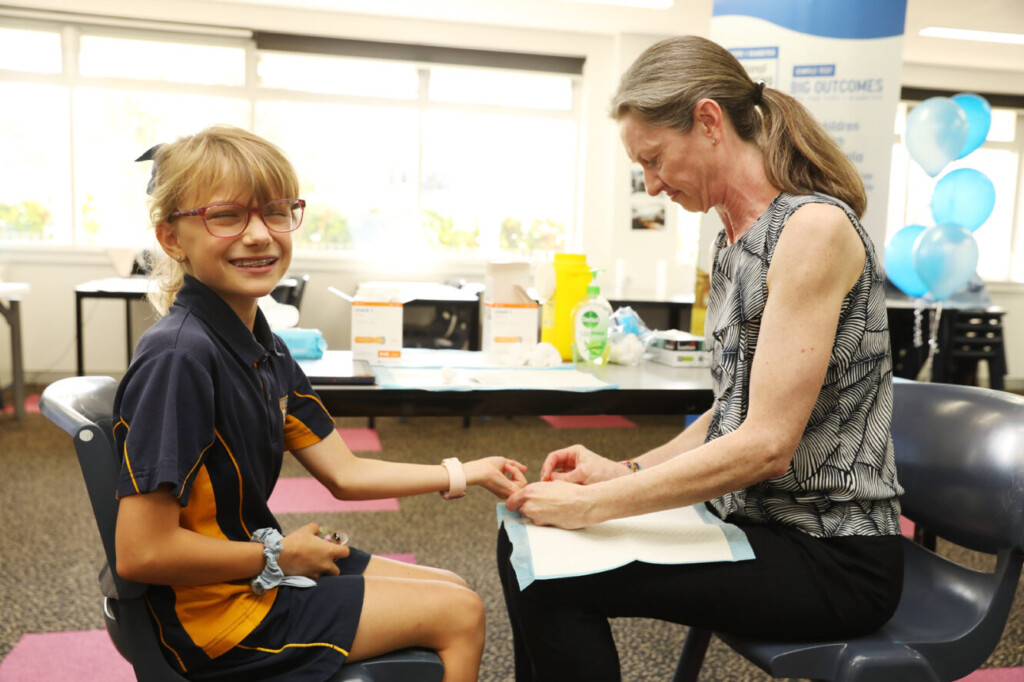
Why is routine childhood screening important?
Many people are surprised to learn that 90% of people diagnosed with T1D have no family history of the condition. Ideally, all children would be screened, not only those who have a family member already living with the condition.
Screening for T1D can identify very early signs of the condition before any symptoms have developed. This is important as early signs of T1D can be missed, with one in three childhood T1D diagnoses occurring only after emergency hospitalisation with a critically dangerous condition called diabetic ketoacidosis (DKA). Not only is this a traumatic experience for the child and families, but DKA on diagnosis is associated with worse long-term health outcomes.
Screening could instead mean that parents have advanced warning if their child is developing T1D, giving them time to prepare for a diagnosis, and, importantly, avoid DKA. In the long term, children in the early stages of T1D would also be able to access therapies like Teplizumab to delay T1D onset as they become available in Australia.
“Screening in childhood has been shown to decrease the rates of DKA on diagnosis by 90%, so screening has the potential to support an earlier diagnosis before children become seriously unwell. While there is no cure yet for the condition, early detection may prevent serious health problems and aims to support a better prognosis and long-term management of the condition,” says Dr Dorota Pawlak, JDRF Australia Chief Scientific Officer.
“In the future, it could also fast-track access to emerging therapies that can delay the progression of type 1 diabetes, as those who could benefit would be identified early.”
How can T1D be detected before symptoms begin?
T1D is an autoimmune condition where the immune system mistakenly attacks the body’s own insulin-producing beta cells in the pancreas, leading to their loss and an inability to produce insulin.
Currently, most diagnoses take place once symptoms have begun – common signs are usually excessive thirst, fatigue, weight loss and frequent urination. However, decades of research have shown that T1D begins well before these symptoms develop and a diagnosis is made.
It’s believed that an environmental event triggers the immune attack in people who are genetically susceptible. A marker of this autoimmunity is the production of autoantibodies, which can be detected in the blood. The presence of more than two autoantibodies in the blood is associated with an increased likelihood of developing T1D down the track.
Screening can detect these autoantibodies.
What’s involved in the pilot?
The pilot program is rolling out in several locations across Australia, with different ages and screening methods being compared. There are three different arms, with one focused on school-aged children; Inaburra School is the first school to participate in this arm.
Students who opted in to participate had a simple finger prick test performed by a registered nurse, with a few of drops of blood collected and sent to the lab to be analysed for the presence of T1D autoantibodies.
Why were these ages selected?
Students from kindergarten and year 4 were invited to partake as they are at the ideal ages to identify T1D in its early stages. If a child has not shown signs of having early-stage type 1 diabetes by the time they are 10 years old, it is unlikely they will develop the condition in childhood.
“We are so grateful to Inaburra School and to the families and students who are participating for helping us carry out this important research. Our study is a pivotal first step in achieving our vision for T1D screening to be implemented as a national screening program for all Australian children,” says Dr Kirstine Bell, pilot lead (pictured below).
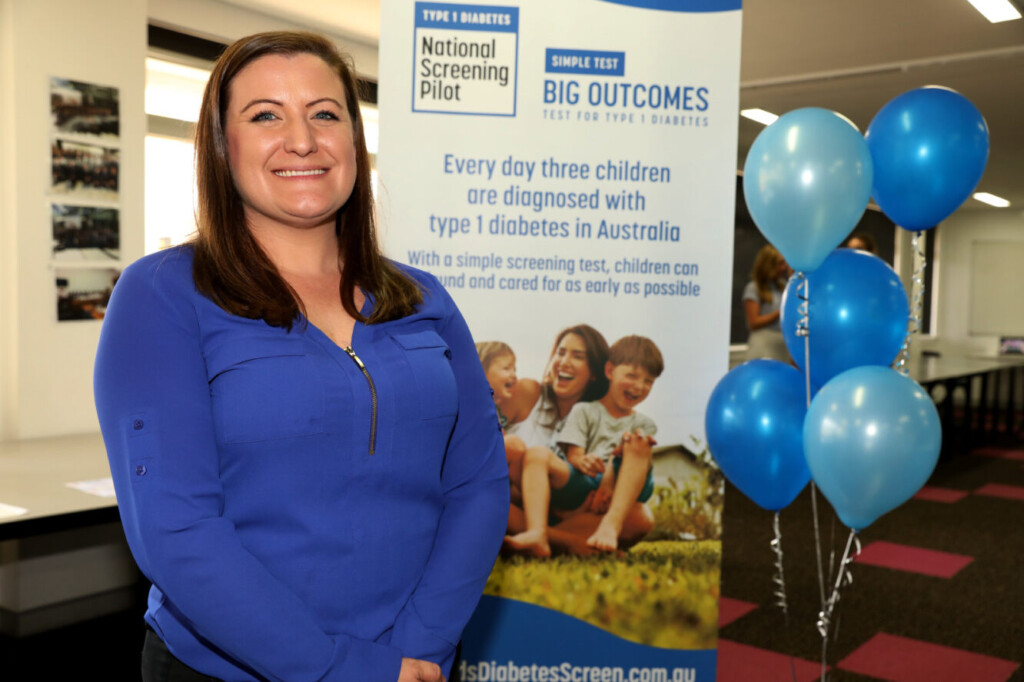
What happens if a child has T1D antibodies?
For the majority of children participating in the pilot across Australia, their tests will show that they are not in the early stages of T1D.
The parents or carers of any children who are identified as having one or more autoantibodies for T1D will be notified. They will be introduced to a healthcare team that can support their needs by providing management and treatment plans.
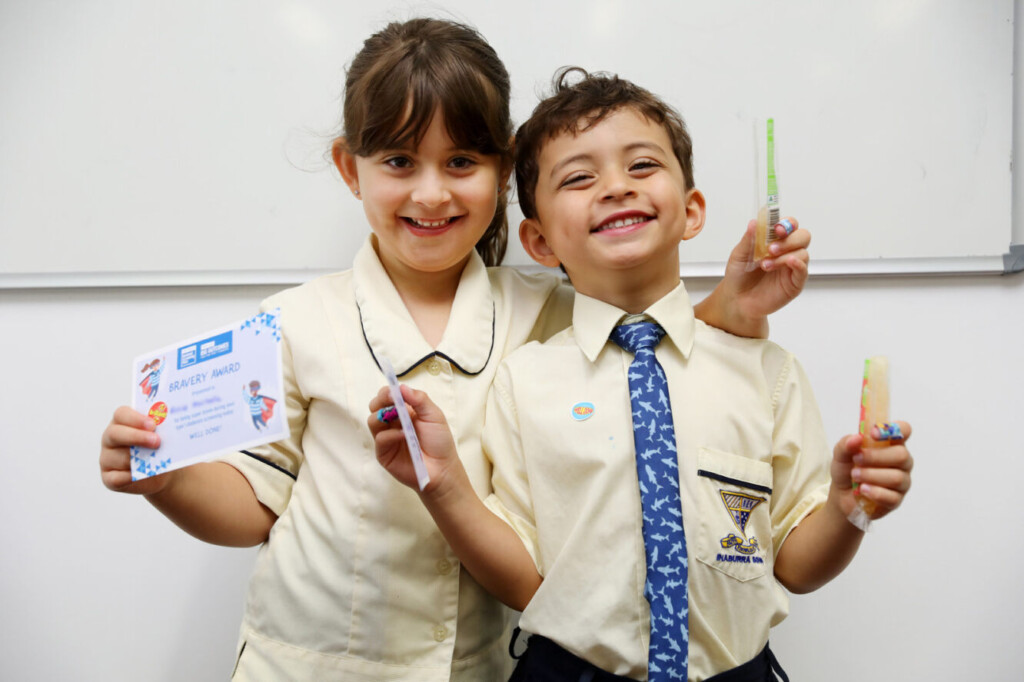
Where can I find more information?
More information about the Type 1 Diabetes National Screening Pilot is available at kidsdiabetesscreen.com.au or by reading our impact report (page 25).
Our commitment to T1D screening and prevention
JDRF is committed to funding research for every stage and age of T1D, from those diagnosed to those at risk of developing T1D. That’s why we specifically fund screening and prevention projects under our primary funding program, the T1D Clinical Research Network.
To find out more about how we support T1D screening and prevention, read about our funded projects here.

